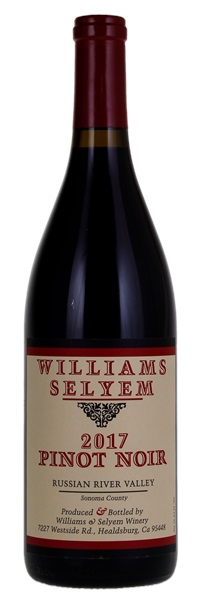Estimate

This is such an impressive appellation-wide blend, combining several vineyard sites into a cohesive whole. Incredibly aromatic in rose and raspberry, the palate brings velvety layers of dark cherry and cinnamon, with integrated acidity keeping the balance.
...shows classic Russian River fruit...as well as plenty of spice, underbrush, and floral notes. Giving up plenty of wild strawberry and Bing cherry fruit, medium to full body, nicely integrated acidity, and a great finish. it has plenty of upfront charm.
...scents of lilac and dried violet with warm blueberry, black cherry, dusty earth, Earl Grey tea leaves and warm baking spice. It's light to medium-bodied with wonderful ripe, perfumed fruits in the mouth, lifted by soft, grainy tannins and mouthwatering acidity, finishing spicy.